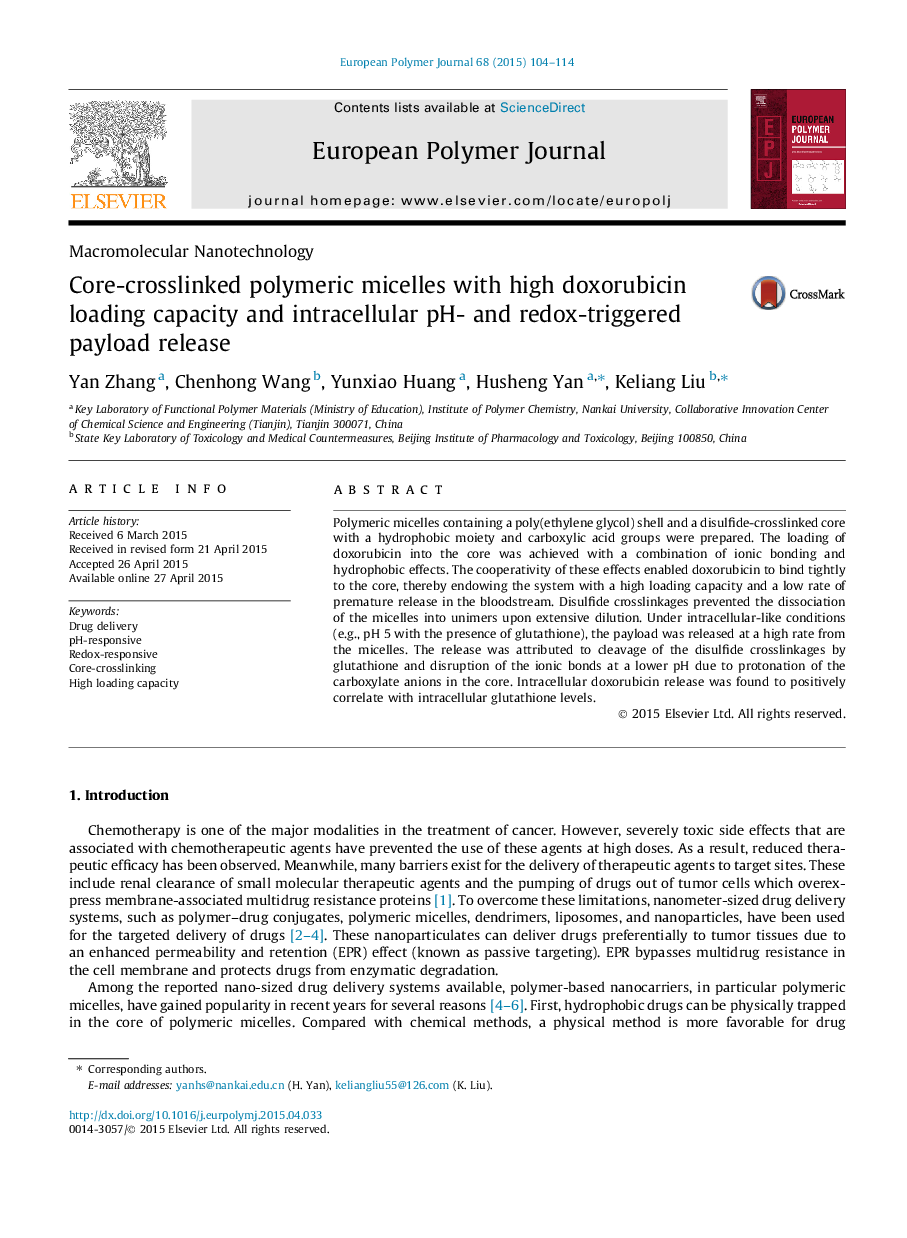| Article ID | Journal | Published Year | Pages | File Type |
|---|---|---|---|---|
| 1395122 | European Polymer Journal | 2015 | 11 Pages |
•Drug load driven by a combination of ionic bonding and hydrophobic effects.•High stability upon extensive dilution due to the core-crosslinking.•High loading capacity and low premature release.•Rapid release upon entry into the target cells.
Polymeric micelles containing a poly(ethylene glycol) shell and a disulfide-crosslinked core with a hydrophobic moiety and carboxylic acid groups were prepared. The loading of doxorubicin into the core was achieved with a combination of ionic bonding and hydrophobic effects. The cooperativity of these effects enabled doxorubicin to bind tightly to the core, thereby endowing the system with a high loading capacity and a low rate of premature release in the bloodstream. Disulfide crosslinkages prevented the dissociation of the micelles into unimers upon extensive dilution. Under intracellular-like conditions (e.g., pH 5 with the presence of glutathione), the payload was released at a high rate from the micelles. The release was attributed to cleavage of the disulfide crosslinkages by glutathione and disruption of the ionic bonds at a lower pH due to protonation of the carboxylate anions in the core. Intracellular doxorubicin release was found to positively correlate with intracellular glutathione levels.
Graphical abstractFigure optionsDownload full-size imageDownload as PowerPoint slide
